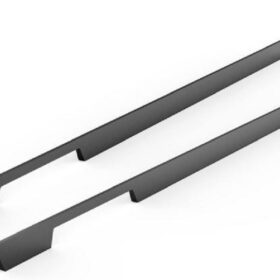Integrating IoT Technology in Circular Aluminum Profiles
Integrating IoT Technology in Circular Aluminum Profiles: Unlocking Sustainable Smart Structures
In the era of rapid technological advancements, the convergence of the Internet of Things (IoT) and sustainable construction has emerged as a transformative force. Circular aluminum profiles, renowned for their durability and recyclability, are poised to become the foundation of intelligent and eco-friendly structures.
IoT Technology: The Nerve Center of Smart Structures
IoT devices, equipped with sensors, actuators, and connectivity modules, serve as the neural network of smart buildings. They collect and transmit real-time data on various parameters, such as temperature, humidity, energy consumption, and occupancy levels. This vast pool of information empowers the creation of automated systems and data-driven decision-making.
Circular Aluminum Profiles: The Sustainable Skeleton
Circular aluminum profiles are produced using a closed-loop process that minimizes waste and maximizes material utilization. Their strength and corrosion resistance make them ideal for structural applications, while their inherent circularity promotes endless recycling. By integrating IoT technology into these profiles, we can harness the power of real-time monitoring and predictive analytics to optimize performance and extend their lifespan.
Benefits of Integration
The integration of IoT technology in circular aluminum profiles offers a myriad of benefits:
Enhanced Energy Efficiency: Sensors can monitor energy consumption and adjust lighting, ventilation, and other systems based on occupancy and environmental conditions, reducing energy waste.
Improved Occupant Comfort: IoT devices can detect changes in temperature, humidity, and air quality, automatically adjusting conditions to maintain a comfortable and healthy indoor environment.
Predictive Maintenance: By analyzing data from sensors embedded in the profiles, engineers can identify potential issues and schedule maintenance before they become significant problems.
Increased Structural Integrity: IoT sensors can monitor the structural health of the building in real time, detecting any potential damage or degradation, and facilitating timely repairs.
Sustainability Metrics: The integration of IoT technology enables the tracking and reporting of sustainability metrics, such as energy consumption, waste reduction, and circularity, promoting transparency and accountability.
Conclusion
The integration of IoT technology in circular aluminum profiles represents a quantum leap in sustainable construction. By harnessing the power of real-time monitoring, data-driven decision-making, and a circular materials approach, we can create intelligent, energy-efficient, and long-lasting structures that contribute to a more sustainable and interconnected world.
-
2024-09-14Exploring the Different Types of Modern Closet Door Pulls and Their Applications
-
2024-09-14How Cabinet Door Pull Handles Support High-Traffic Areas
-
2024-09-06Cost-Benefit Analysis of Investing in High-Quality Long Wardrobe Door Handles
-
2024-09-04How Flat Cabinet Handles Enhance Modern Interior Design
-
2024-11-29Top Trends in Modern Kitchen Cabinet Pulls for 2024
-
2024-11-28The Ultimate Guide to Modern Kitchen Cabinet Pulls- Materials, Styles, and Tips
-
2024-11-27Elevate Your Kitchen Design with These Must-Have Modern Cabinet Pulls
-
2024-11-26Sleek and Stylish- The Best Modern Kitchen Cabinet Pulls for a Contemporary Look






